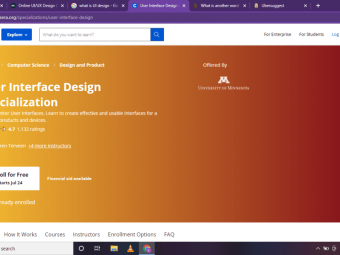Oracle Plsql Fundamentals Database Design 3 Bundle
Tags: Pl/SQL
The ultimate Oracle/database course bundle with over 20 hours and 100 videos!
Last updated 2022-01-10 | 4.7
- Over 100 lectures and 20 hours of content- Understand different types of databases
- Relate tables with IDs
What you'll learn
* Requirements
* Basic Microsoft Windows training or equivalent experience and familiarity with database and programming principlesDescription
Over 20 hours and 100 videos are included in this bundle.
Save 20% by purchasing 3 Oracle/Database courses. This bundle includes:
- Oracle PL/SQL Fundamentals vol. I
- Oracle PL/SQL Fundamentals vol. II
- Database Design Instruction
In this Oracle 11g PL/SQL vol I & II courses, you will receive introduction training on PL/SQL database programming language covering syntax, structure and features of the language within the context of database applications and programming. In volume II students will dive into topics such as understanding the basic form and structure of program units stored within the database, building and maintaining stored procedures, functions, packaged programs, and database triggers. Additional topics include taking advantage of advanced programming techniques such as cursor variables and cursor expressions. This Oracle 11g course will prepare students for the Oracle certification exams (OCP).
The Database Design Instruction course familiarizes the student with techniques necessary to properly create and normalize a relational database. This single course can help prevent the new database developer from creating mistakes that add hours and days to a development project. Information in this course is a must for anyone responsible for building and maintaining a database.
Who this course is for:
- Application designers and developers
- Students just getting started with designing databases and those who have been designing databases but looking for tips on more effective design
Course content
3 sections • 117 lectures








 This course includes:
This course includes:













